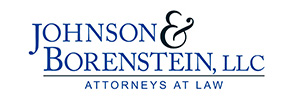Land use practitioners in Massachusetts are well aware of the “difficult and infelicitous” language of the first two sentences of G. L. c. 40A, § 6 concerning single and two-family dwellings. The statute reads:
Except as hereinafter provided, a zoning ordinance or by-law shall not apply to structures or uses lawfully in existence or lawfully begun, or to a building or special permit issued before the first publication of notice of the public hearing on such ordinance or by-law required by section five, but shall apply to any change or substantial extension of such use, to a building or special permit issued after the first notice of said public hearing, to any reconstruction, extension or structural change of such structure and to any alteration of a structure begun after the first notice of said public hearing to provide for its use for a substantially different purpose or for the same purpose in a substantially different manner or to a substantially greater extent except where alteration, reconstruction, extension or structural change to a single or two-family residential structure does not increase the nonconforming nature of said structure. Pre-existing nonconforming structures or uses may be extended or altered, provided, that no such extension or alteration shall be permitted unless there is a finding by the permit granting authority or by the special permit granting authority designated by ordinance or by-law that such change, extension or alteration shall not be substantially more detrimental than the existing nonconforming use to the neighborhood.
The courts have repeatedly grappled with this statute, with the Supreme Judicial Court previously determining that it allows extensions and changes to preexisting conforming homes provided that “(1) the extensions or changes themselves comply with the ordinance or by-law, and (2) the structures as extended or changed are found to be not substantially more detrimental to the neighborhood than the preexisting nonconforming structure or structures.” Rockwood v. Snow Inn Corp., 409 Mass. 361, 364 (1991). A question arises when the proposed change will alter or extend the non-conformity; is the existing structure entitled to protection or is a variance required from the dimensional requirements of the bylaw that the structure plus addition will not comply with?
Recently the SJC again reviewed the above language in Bellalta v. Zoning Bd. of Appeals of Brookline, No. SJC-12516, at *2-3 (Feb. 8, 2019)and concluded that:
“the statute requires an owner of a single- or two-family residential building with a preexisting nonconformity, who proposes a modification that is found to increase the nature of the nonconforming structure, to obtain a finding under G. L. c. 40A, § 6, that ‘such change, extension or alteration shall not be substantially more detrimental that the existing nonconforming use to the neighborhood.’ The statute does not require the homeowner also to obtain a variance in such circumstances.”
In this case an abutter appealed a decision of the Brookline Zoning Board which granted a special permit to homeowners to allow modification of the roof of their two-family home and to add a dormer, even though doing so would increase the preexisting nonconforming floor area ratio. The Board found increasing the FAR would not be substantially more detrimental to the neighborhood than the existing home. The abutters challenged the grant of the special permit, alleging that the homeowners needed to obtain a variance because the increase in the FAR meant that the home would not comply with the zoning bylaw. The Land Court upheld the Board’s issuance of a special permit, and on further appeal SJC affirmed.
The SJC’s analysis focused on the “second ‘except’ clause” of c. 40A § 6, which affords additional protections to owners of single- and two-family preexisting nonconforming structures who seek to intensify those nonconformities. Recognizing the long-standing principle that elimination of nonconformities is desirable, the SJC also noted that construing the statute to require a variance in addition to a finding of no substantial detriment would “render it nearly impossible for the homeowners to renovate, modernize, or make any substantial improvements to an older home, particularly if those improvements would increase the nonconforming nature of the structure,” and that this could “make it economically infeasible to modify a nonconforming home in any but the most minimal ways, could curtail the ability to sell such a house, and, accordingly, could result in a reduction in the amount of available affordable housing, as well as potentially reducing the town’s population and the municipal tax base.” Bellalta , at *19-20.
This eminently practical decision is based on solid statutory analysis and is consistent with a long line of case law in Massachusetts, case law which has not been disturbed by the Legislature as it has amended (or declined to amend) the statute over the years. This decision should provide some measure of relief and certainty to homeowners that they may seek to expand a preexisting nonconforming structure that will not comply with the local bylaw without the requirement to obtain a variance, which can be a lengthy, expensive, and uncertain proposition.

